Daixi is located in the borders of the Tianmu Mountains and the Hangzhou-Jiaxing Lake Plain, a semi-mountainous area with many historical monuments. It is also within half an hour's drive of the Ten Ancient Roads of Wuxing, China's cosmetic manufacturing base - Huzhou.
With the passage of time, the green slippery stone slabs of the ancient road, leaving us is still a series of historical echoes, burning is a section of dusty memories. If you are interested, why not take a walk along these ancient paths after work and enjoy the charm of Huzhou culture in the process of exploring the past.
Daochang Mountain Ancient Road

The Daochang Mountain, formerly known as "Yun Feng", is a beautiful mountain range with refreshing water and rocks, making it one of the best scenic spots in Wuxing. "The clearing up of the Dojo was the first of the "Eight Sceneries of Wuxing". It's also a good place to get a good deal of information about the company's products and services.
The ancient road starts from the east of the mountain, through the two pavilions of Guanghao and Fuhu, and leads to the gate of Wanshou Temple. The stone fragrant path from the gate to the Guanyin Hall is carved with lotus flowers, lotus leaves, lotus seeds and other patterns on every other piece of the path, which are in different shapes and vividly lifelike. Along with the Guanyin Hall, the Thousand Buddha Wall, and the Multi-Precious Pagoda, the ancient path has become a precious historical heritage.
Centipede Ling Ancient Road
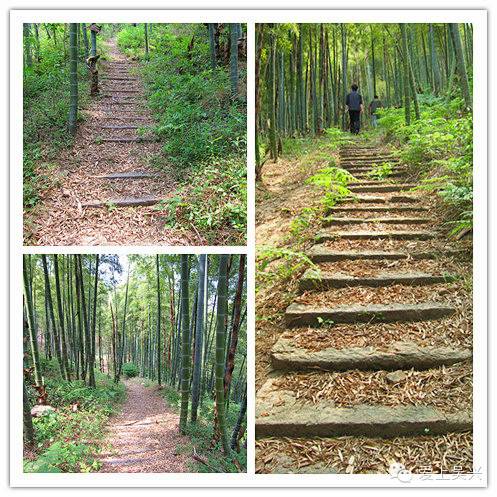
It is located at the southern foot of the Daochang Mountain, which is commonly known by local villagers as "Five Hundred Steps" (about 500 steps), and is more than 420 meters long. The ancient road is built from the foot of the mountain to the head of the Wentipede Ridge, and all the steps are made up of more than 500 stone slabs, which are made of exquisite materials and paved in a uniform manner.
According to testimony, the "Wentipede Ridge Ancient Road" was an official road leading from Huzhou to Hangzhou during the Ming and Qing dynasties, Huzhou people to go out of the city to go to Hangzhou, must go through the South Gate to take Su-tai Mountain, over Zhang Xian-ting and Daochang-hang, through the Castle Peak dock, to reach the Wentipede Ridge, over the "five hundred steps" stone level, at the bottom of the mountain is the Avenue to Hangzhou.
Ancient Pure Yang Palace Road
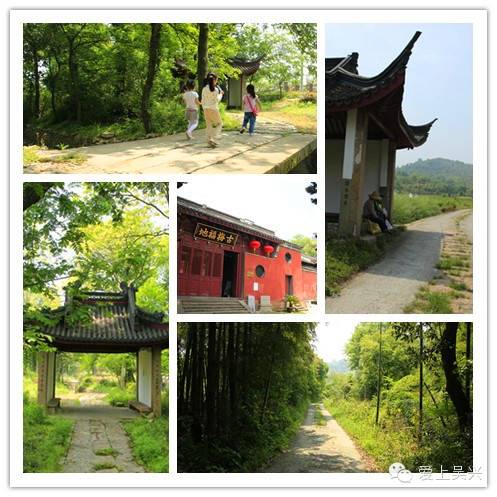
Jin Gai Mountain in the south of Huzhou City, also known as "Yun Chao", is full of clouds, lingering like a wall, and full of fairy spirit. Since the southern Taoist ancestor of the Qing dynasty on the Taoist Lu Xiu Jing in the south of the spring valley (now the Tong Feng dock) to plant plum to enjoy and open the mountain, to the Qing dynasty Jiaqing first year (1796) min a get expansion of the pure Yang Palace, also known as "ancient plum blossom view", became the general altar of Zhejiang and Shanghai Quanzhen Longmen faction.
The late Qing dynasty to the Republic of China, pure Yang Palace incense flourished. Noble incense is mostly by water, crossing the Bi Long Lake, East Ipomoea River, by Wu Shen door shore into the mountains. The ancient road that is from the Wu Shen door, access to the Pure Yang Palace gate, about 1700 meters long, by the granite horizontal (or straight) paved, pebble slope construction. First over the Yun Chao bridge, you can walk in the clouds on the foggy stone road, halfway in the "Zhi Zhi" "Zizhi" two pavilions rest, and then over the Yun Xiang bridge over the real stream, into the Tong Feng Yu, the Pure Yang Palace from hidden and not exposed to open up, very similar to the Tao Yuanming described the paradise, Chongge Flyway, coincidentally natural.
The Qomolang Mountain Trail
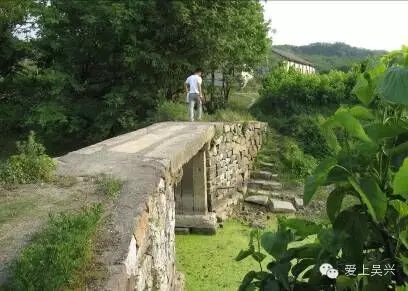
From the east gate of Hucheng to the Sanli Bridge, on the south shore of Di Tang (Changhu-Shen Channel), there is a mountain named "Qiaomu". For the ancient quarrying Dang, now there are two giant solitary stone "stone Gong" "stone po". On the mountain there are different sizes, unfathomable depths of the former quarrying pond more. On the west side of the mountain, there are also stone ponds left over from new mining operations, which are deep and deep.
Because of the geographical location, Qiaomu Mountain is the traffic to the south of Huzhou City. Now there is an ancient road on the mountain, which runs north and south, and is paved with gravel, winding around according to the mountain, most of which has been buried by the mountain soil. Along the way, there are also Xiejiashan (Xiejiashan), Si Wu Bridge, Yuantongan and other ancient trail relics can be found.
Tou Kaishan Ancient Road
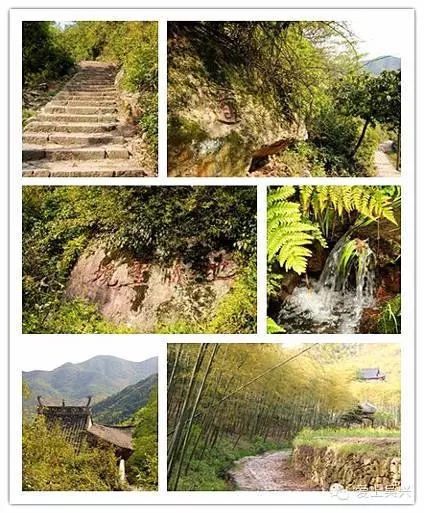
It is also called Phoenix Hill because of its phoenix-like shape. It is said to be the earliest Taoist temple of Ksitigarbha. The trail winds up several hundred meters from east to west along the Maoyu Village to the deep sea of bamboo, where you will find the path of climbing, which is called "Bodhi Road".
The ancient path is long and steep, with streams running alongside it. Along the way, there are rock carvings such as "Xiaoshi" and "Jizo Sanctuary". Halfway up the mountain there is a pavilion with a "fairy cave" where several people can play chess and sleep. Pick up the steps, the ancient road begins to level off, in the shade of the bamboo forest there is an ancient temple Huang Jue Temple. Inside the temple is the pavilion-style Tianwang Temple, where 400-year-old zelkova trees and 600-year-old Hongnan trees flourish. Under the ancient Hongnan tree, there is a pond named "Lingquan", which has the reputation of clear eyes.
Qiaobanshan Ancient Road
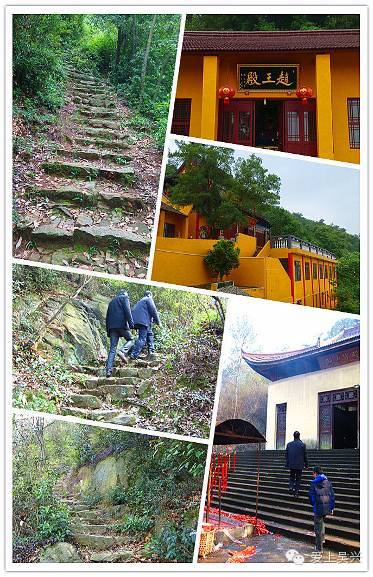
Qiaopan Mountain is located 1 kilometer southeast of Taixi Town, Qing Guangxu "Gui'an County" praised: "The peaks are surrounded by mountains, and the clear streams eddy back murmuring. In the spring, visitors compete to enjoy the mountain, thinking that the place of flowing water."
There is an ancient temple Qing Yun Zen Temple on the mountain today. Inside the temple is the Hall of King Zhao, which was built at the end of the Ming Dynasty and is dedicated to Zhao Zilong, the famous general of the Three Kingdoms. The two heroes of the Three Kingdoms reunited here, which is also a result of the mountain.
There is an ancient road leading up to the top of the mountain, which is well-preserved, primitive and simple, although it has been through the vicissitudes of time. The ancient road is lined with dense verdant trees, and has a quiet and deep mood. When you turn back to the top of the hill, you can have a panoramic view of the town to the northwest, and to the southeast is the hillock range, where trees and grasses do not grow and there are strange and jagged rocks. At the beginning of summer, there are wild gardenia flowers in full bloom here, the fragrance is overflowing, making people feel relaxed and happy.
Ancient road of Xiamu mountain
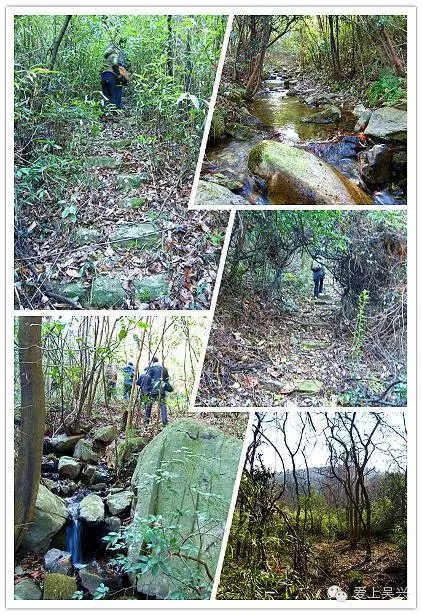
In the Yuan Dynasty, Seokgyo Cheong, a Zen priest of the Rinzai sect of Buddhism, established a monastery at the top of the mountain and practiced Buddhism. In the Yuan Dynasty, Seokgyo Cheong, a Buddhist master of the Imjeong Sect of Buddhism, established a nunnery on the top of the mountain at Cheonho and practiced in the temple.
There are still four ancient paths that began at the foot of the mountain in the villages of Myeongsan, Sokang, Shangbao, and Zhaocun Lujiazhuang, all of which were ancient paths for incense worshippers to go to the Cheonho nunnery at the top of the mountain.
The trail that begins at Miao Shan Village is a gentle 2-kilometer hike up the mountain, reminiscent of the ancient pilgrims who traveled to and from the Tian Hu Ancestral Hall and the Fuyuan Temple.
The hiking road that starts from slightly Kang village is relatively rugged, but the stone level is well preserved, about 2.5 kilometers, along the way you can view the Tangli Canyon, temple base dock, cock crowing stone, cabinet stone, a hundred paces stalls and other landscapes.
The two ancient paths, which begin at Shangbao Village and Lujiazhuang Zhongyuan Lake in Zhao Village, are lined with dense vegetation, birdsong and fragrant flowers, accompanied by streams flowing between them, and from a broad viewpoint you can overlook the reservoir at the bottom of the mountain, paddy fields and villages in the distance.
Yinmachi Mountain Ancient Trail
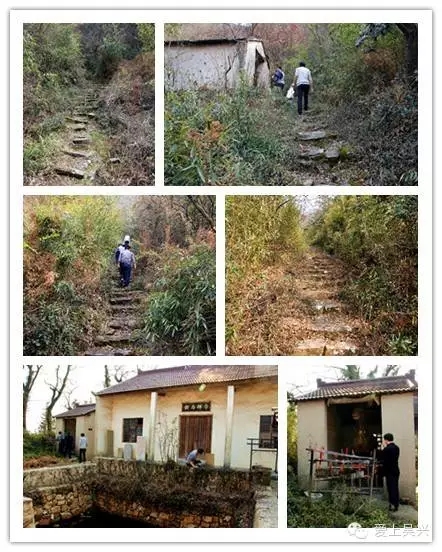
Yinmachi Mountain is located in the southeast of Miaoxi Township, shaped like a Yuanbao, high and steep in the east and west, with the mountain resembling an immortal spirit, and is often seen with the illusion of clouds and haze, so it is nicknamed "Yinma Liuyun" and is one of the "Eight Sceneries of Guoxiwan". According to legend, King Zhao Juzuo of Kang (i.e. Emperor Gaozong of Song Dynasty) once took refuge on the hill in Horse Drinking Pond, so it was named "Horse Drinking Pond", which means that the emperor once rested here and drank water from the royal horse.
There is a well-preserved ancient stone path that stretches from the foot of Yinmachi to the top of the mountain. Both sides of the ancient path are densely vegetated, and the path winds and twists, sometimes steep and sometimes slow. Halfway up the mountain are the remains of an ancient gate with the words "Chishan Pass" written on it.
The top of the mountain is open and gentle, and is said to be the place where King Kang trained his troops. On the top of the hill, there is the Horse Drinking Zen Temple, where a mud horse is enshrined, which proves the story of "the mud horse saved King Kang". In front of the temple is the Imperial Horse Drinking Pond, which is adjacent to the Kangwang Spring Pond, and it is said that the water in the pond can drink for a thousand people and never dries up.
Qixianshan Ancient Road
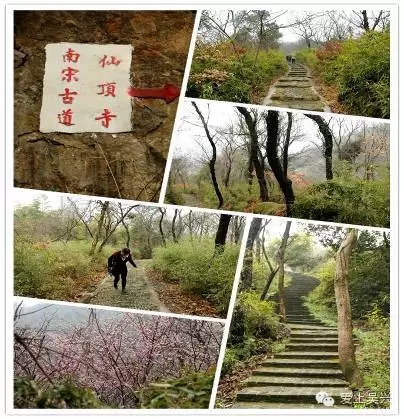
It is also known as Xidan Mountain in Gansu, where descendants of Guanzhong, a prime minister of Qi during the Spring and Autumn Period (770-476 BC), took refuge, hence the name "Xidan". At the foot of the present mountain, there is also a village and a temple of Guanzhong. There is an immortal's peak in the mountain, the highest of which is called Miaocheng Peak. There is a well-preserved Southern Song Dynasty brick road, winding up to the top of the immortals.
The ancient road on both sides of the pine breeze, natural scenery, Zhang Yu, one of the "Four Outstanding Wuzhong" in the early Ming Dynasty, once came to visit and made a poem called "Traveling to the top of the immortals": "Pan Yun ascending the dangerous cliff-ledge, ten steps five back to sit. There are no tiger tracks beside the road, and a fairy has passed by. The three sides of the Fairy's Peak are lush green, as if it were the residence of immortals. On the top is the Xian Ding Temple, a Buddhist temple built in the early Shaoxing period of the Southern Song Dynasty. Inside the temple is a tall, thousand-year-old ginkgo tree, which is said to have been planted by Prince Zhaoming of Southern Liang. There is also a stele that was erected in the late Qing Dynasty, which describes the rise and fall of the temple. There is a poem by Wang Yu at the end of the Ming Dynasty: "Mighty mountains in the sky, immortals on earth. When will I be able to reach this and forget the earthly world."
Lujiayou Bridge and Ancient Road

It is located in Sanhe Village, Donglin Town, Wuxing District (the editor should have walked it as a child), and was built in the Qing Dynasty. The Lujiadou Bridge is a north-south single-hole stone arch bridge with a length of 6.6 meters, a deck width of 2.5 meters, and a single hole span of 3.1 meters. The arch is a semi-circular arch made of local blocks of stone, without beams and pillar stones. The bridge is paved with pebbles and is now covered with cement.
On the south side of the bridge is a 1,000-meter-long ancient road from the Ming and Qing dynasties, paved with cobblestones and blocks, 1.3 meters wide, which is connected to the bridge and is the only way in and out of the mountains and forests. The road is preserved more complete. The ancient road era style is more obvious.

浙公网安备 33050202000707号
Legal Notices丨Regulations丨